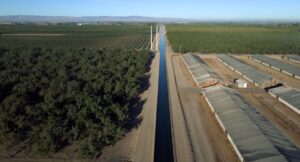
The State is investigating the potential benefits of turning its beleaguered water network into a renewable energy source.
Originally proposed by researchers at the University of California, the idea has been slow to gain traction but now looks like it could become a reality in the near future.
According to the team’s initial study, the potential gains from this project could be significant, with around 63billion gallons of water saved by covering the State’s almost 6,500km of water canals. In doing so, it could also generate 13gigawatts of electricity, which is enough to power the entire City of Los Angeles from January to early October, based on annual average power demand.
However, this is only now set to be tested in practice with Project Nexus, in California’s Central Valley. The first undertaking of its kind in the US, it will see sections of the Turlock Irrigation District’s (TID) canals covered with sola arrays, with the California Department of Water Resources, Solar AquaGrid, and UC Merced partnering on the trial. If successful, it could provide proof of concept for similar systems to be implemented in other parts of the country.










